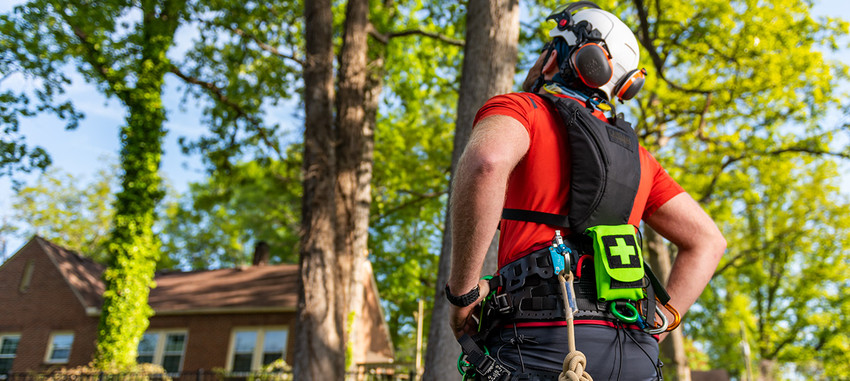TFTC #26 Make Hydration Happen
Sherrilltree May 20th 2021As spring turns to summer and busy season kicks into overdrive, every tailgate safety meeting happening right now is about hydration. Many are learning how to tell when they’re dehydrated. They’re learning about all the bodily functions that rely on water, and how 60% of our body weight is water.
So, rather than regurgitate the facts that tell us we should be hydrating (because we already know that), let’s strategize how to stay hydrated on the jobsite. After all, if talking about what hydration is and why it’s important was enough, we wouldn’t still need to stress those facts. You know the facts. I know the facts. Let’s make sure we’re prepared to make it happen. Like everything in tree work, this preparation means having the team and the tools to get the job done.
The Right Team for the Job
Tree crews depend on one another to remain safe and productive, and hydration is key to both safety and productivity. It should be managed as intentionally as saw handling or jobsite communication. So take initiative to check in on your teammates, making sure they’re drinking plenty throughout the day. Don’t wait for the crew leader to do it. He or she has a jobsite to run and may not think to ask. Support them and the whole team by championing this safety component.
“If you make hydration easier to do then you are more likely to do it!”
Climbers, appoint someone on the ground to remind you to drink water while aloft. Drinking between climbs is terribly inadequate for maintaining hydration on most days, especially in the blazing summer sun, and it’s easy to forget to stop for a drink while moving through the crown trying to execute technical operations.
One last tip for team hydration- when you stop to take a drink, remind everyone else to do the same!
The Right Tools for the Job
In the same way that having the right climbing system for a tree makes the work smooth, having the right containers for drinking water makes it easier to incorporate into the workflow. What makes for the best container? Simply, whichever design makes you more likely to drink throughout the day. To choose from the myriad of options available today, there are really just two things that matter—accessibility and water quality.
Accessibility
Choose a container that makes water easily accessible. Insulated canisters can be placed near the chipper or other staging area that will be visited frequently. For climbers, preferences seem to be those that don't clutter the saddle, and store easily. Many plastic and metal bottles feature lids that can be clipped to storage carabiners. Camelbaks also match those preferences, and are usable even during in-tree operations without stopping.
Water Quality
If water tastes like plastic or old shoe, who’s going to drink it? Select a container that you will keep clean. Some arborists want super simple and easy to clean, while others prefer Camelbaks and similar reservoirs that require more maintenance.
If water is hotter than the coolant in the chipper, will you drink it? Make sure that your choice product will keep water at the temperature you prefer. Countless bottles and reservoirs offer insulated options to keep things cool in the heat of the day.
No matter what you keep your water in, keep it nearby, keep it clean and cool, and keep reminding your team to drink up. If you make hydrating easier to do, then you’re more likely to do it. Eliminate excuses!
Daryl Stanley is a freelance writer, contract climber, arborist, and trainer with over 10 years in the industry.

